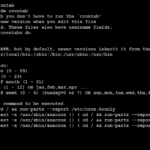Top Most Popular MySQL Commands
This guide highlights essential MySQL commands with examples to help you manage databases more easily.
Create database command
To create a new database in MySQL.
# mysql> create database bitscentric_employee;
Check database command
To check the list of databases in MySQL.
# mysql> show databases;
To change database
# mysql> use bitscentric_employee;
CREATE USER
Use this command to create database users.
# create user employee identified by 'Ek123!@#';
DROP USER
Used to delete a user from the database server permanently.
# mysql> drop user employee;
SHOW USER
Shows users with access to a specific database server.
# SELECT USER from bitscentric_employee;DROP DATABASE
Deletes a database and all its data.
# mysql> drop database bitscentric;
Table Commands Overview
This section covers essential commands for creating and managing tables in a database. Here’s a quick rundown of what each command does:
- CREATE TABLE – Create a new table.
- SHOW TABLES – List all tables in the database.
- ALTER TABLE – Modify an existing table.
- DESCRIBE TABLE – View the structure of a table.
- TRUNCATE TABLE – Remove all data from a table without deleting the table itself.
- DROP TABLE – Delete a table completely.
- RENAME TABLE – Change the name of a table.
- INSERT INTO – Add new records to a table.
- UPDATE – Modify existing records.
- DELETE FROM – Remove specific records from a table.
- ADD COLUMN – Add a new column to a table.
- DROP COLUMN – Remove a column from a table.
- SHOW COLUMNS – Display all columns of a table.
- RENAME COLUMN – Change the name of a column.
CREATE TABLE
# mysql> create table emp( ID int, Name varchar(200), Age int, Address varchar(200), State varchar(200), Country varchar(200), RegDate date);
SHOW TABLE
To see all the tables in a database, first, make sure you have selected the database you want to view. Then, you can list all the tables it contains.
# mysql> show tables;
ALTER TABLE
Used to add, modify, or remove columns or constraints.
# mysql> alter table emp add phone int;
DESC Command
Describe the table.
# mysql> desc emp;
DESCRIBE TABLE
Shows the table’s structure, including column names, data types, default values, and keys.
# mysql> DESCRIBE emp;
TRUNCATE TABLE
To removes all data from a table but keeps the table itself.
# mysql> truncate table emp;
DROP TABLE
Used to delete a table including its data permanently.
# mysql> drop table emp;
RENAME TABLE
Used to rename a table.
# mysql> rename table emp to employee;
INSERT INTO
Used to insert new records into a table.
# mysql> insert into employee( ID,Name,Age,Address,State,Country,RegDate )values('01','Aakash','28','Noida','UP','India','2024-06-01');
# mysql> insert into employee
-> values ('02','Sandeep','21','Delhi','Delhi','India','2024-09-01');
UPDATE TABLE
Used to update data in a table.
# mysql> ALTER TABLE employee ADD COLUMN PIN VARCHAR(10);
# mysql> UPDATE employee SET Name='Aakash', PIN='201301' WHERE ID=1;
Select Command
To show the table inserted data.
# mysql> select * from employee;
DELETE TABLE
Used to delete the existing data items in a table.
# mysql> delete from employee where name='sandeep';
ADD COLUMNS IN A TABLE
Used to add new columns in a table.
# mysql> alter table employee
-> add column Phone varchar(20) after PIN;
Used to delete columns in a table.
# mysql> ALTER TABLE employee DROP COLUMN Phone;
To add multiple columns
# mysql> ALTER TABLE employee
-> ADD COLUMN Father_Name VARCHAR(200) AFTER Name,
-> ADD COLUMN phone INT AFTER RegDate;
SHOW COLUMNS IN A TABLE
Used to display all the columns present in the database.
# mysql> show columns from employee from bitscentric_employee;
RENAME COLUMNS IN A TABLE
Used to rename columns present in a table.
# mysql> alter table employee
-> rename column ID to Emp_Id;







